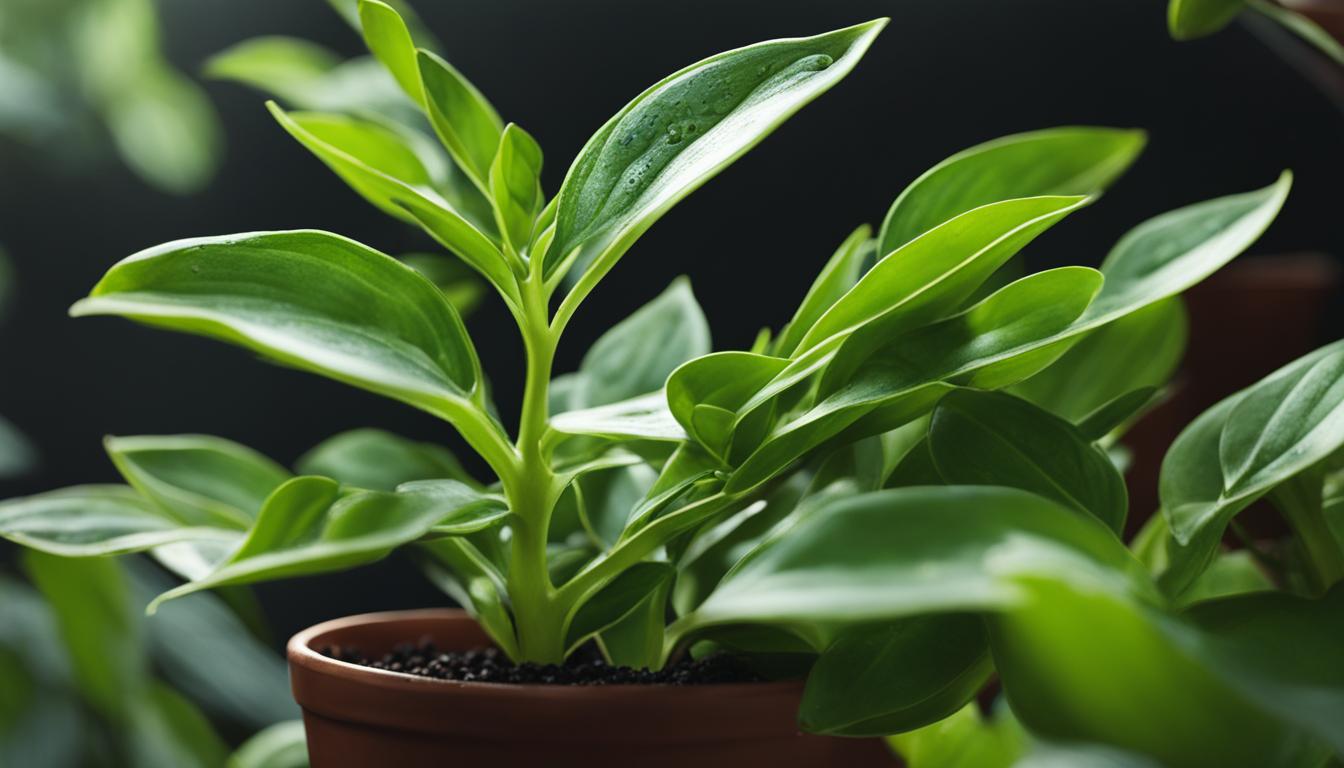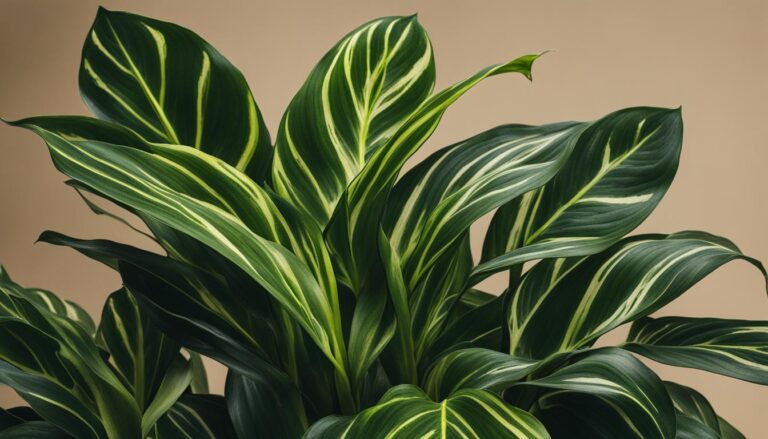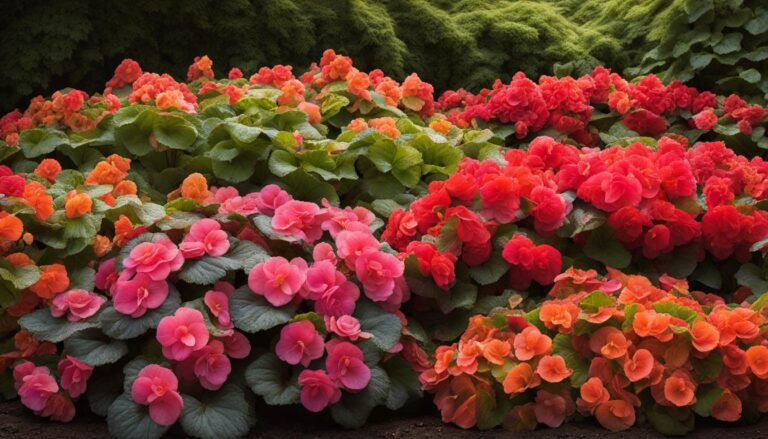
Growing indoor plants can be a rewarding and fulfilling experience. One plant species that deserves special attention is the Prayer Pepper (Peperomia ferreyrae). With its unique appearance and growth habits, this variety of Peperomia has become a favorite among plant enthusiasts.
The Prayer Pepper, also known as the prayer plant, belongs to the Peperomia genus, which consists of approximately 1500 plant species. Its attractive foliage, ranging from smooth purple to grey, green, or red leaves, adds a touch of elegance to any indoor space.
As a slow-growing plant, the Prayer Pepper is an ideal choice for beginners in gardening. Its low-maintenance nature makes it perfect for indoor gardens, adding a touch of natural beauty to any room. Not only are these plants visually appealing, but some Peperomia species, including the Prayer Pepper, also possess medicinal properties, making them valuable additions to your collection of houseplants.
When it comes to plant care, it is crucial to provide the Prayer Pepper with the right conditions. This species thrives in bright indirect light and temperature ranging from 60 to 86 degrees Fahrenheit. It prefers well-draining soil, and watering should be done when the top 2 inches of soil become dry, avoiding overwatering to prevent root rot.
Fertilizing the plants with a balanced houseplant fertilizer during the growing season can promote healthy growth and vibrant foliage. Regular pruning is also recommended to maintain the plant’s shape and prevent legginess. With proper care and attention, the Prayer Pepper can flourish and become a stunning addition to your indoor garden.
Explore the beauty of Prayer Pepper (Peperomia ferreyrae) plants and enjoy the rewards of nurturing these charming succulents. Discover the world of Peperomia species and enhance your collection of ornamental houseplants. Stay tuned for more helpful tips and insights on plant care and species exploration.
Types of Prayer Pepper (Peperomia ferreyrae) Plants
The Prayer Pepper (Peperomia ferreyrae) is a popular variety of Peperomia plants that stands out for its unique characteristics. Here, I will introduce you to some of the different types of Prayer Pepper plants:
1. Peperomia Albovittata
This variety of Prayer Pepper features elongated leaves with a striking combination of dark green and white stripes. It adds a touch of elegance to any indoor garden and is highly sought after by plant enthusiasts.
2. Peperomia Argyreia (Watermelon Peperomia)
As the name suggests, this type of Prayer Pepper has leaves that resemble the rind of a watermelon. The leaves have a silver-gray color with dark green stripes, creating a unique and eye-catching pattern.
3. Peperomia Axillaris
With its heart-shaped leaves and trailing growth habit, this variety of Prayer Pepper is perfect for hanging baskets or as a trailing plant in a pot. The leaves are light green and have a slightly waxy texture.
4. Peperomia Caespitosa
The Caespitosa variety of Prayer Pepper is known for its compact growth habit and small, rounded leaves. The leaves have a vibrant green color and a glossy appearance, adding a touch of freshness to any indoor space.
5. Peperomia Caperata Frost
This variety of Prayer Pepper features deeply textured leaves with an attractive frosty appearance. The leaves have a silvery-green color with dark green veins, creating a visually captivating effect.
These are just a few examples of the diverse range of Prayer Pepper (Peperomia ferreyrae) plants available. Each type has its own unique characteristics, making them suitable for various indoor gardening preferences and styles.
Comparison of Prayer Pepper (Peperomia ferreyrae) Plant Types
| Plant Type | Leaf Appearance | Growth Habit | Color |
|---|---|---|---|
| Peperomia Albovittata | Dark green and white stripes | Upright | Dark green, white |
| Peperomia Argyreia (Watermelon Peperomia) | Silver-gray with dark green stripes | Upright/trailing | Silver-gray, dark green |
| Peperomia Axillaris | Heart-shaped, light green | Trailing | Light green |
| Peperomia Caespitosa | Small, rounded, glossy | Compact | Vibrant green |
| Peperomia Caperata Frost | Deeply textured, silvery-green with dark green veins | Upright | Silvery-green, dark green |
A comparison of different types of Prayer Pepper (Peperomia ferreyrae) plants, showcasing their leaf appearance, growth habit, and color.
Care Guide for Prayer Pepper (Peperomia ferreyrae) Plants
Proper care is crucial for the healthy growth of Prayer Pepper (Peperomia ferreyrae) plants. These indoor houseplants thrive in bright indirect light, making them ideal for spaces with limited sunlight. It is recommended to place them near a window that receives filtered light or provide artificial light sources.
Temperature plays a vital role in the well-being of Prayer Pepper plants. Maintaining a temperature range between 60 and 86 degrees Fahrenheit (15-30 degrees Celsius) ensures optimal growth. Avoid exposing them to extreme temperature fluctuations and drafts, as it can damage their delicate leaves.
When it comes to watering, it is important to strike the right balance. Overwatering can lead to root rot, while underwatering can cause the leaves to wilt and drop. The best approach is to water the plants when the top 2 inches of soil become dry. Use your finger to check the moisture level or invest in a moisture meter for accurate readings.
Prayer Pepper plants prefer well-draining soil to prevent waterlogged roots. You can use a potting mix specifically formulated for succulents or create your own by combining equal parts of peat moss, perlite, and coarse sand. Ensure that the pot has drainage holes to allow excess water to escape.
Regular fertilizing helps maintain the health and vitality of Prayer Pepper plants. Apply a balanced houseplant fertilizer every 2-4 weeks during the growing season (spring and summer). Follow the instructions on the fertilizer packaging for the appropriate dosage. Remember to water the plants before fertilizing to prevent root burn.
To maintain a compact and bushy shape, it is recommended to prune Prayer Pepper plants regularly. This helps prevent legginess and promotes branching. Use clean and sharp pruning shears to trim back overgrown stems or remove any damaged or yellowing leaves. The pruned cuttings can be used for propagation.
With the right care and attention, your Prayer Pepper (Peperomia ferreyrae) plants will flourish and bring beauty to your indoor garden. Following these guidelines will help create an optimal environment for their growth and ensure their long-term well-being.
FAQ
What is the ideal temperature for Prayer Pepper plants?
Prayer Pepper plants prefer average to warm temperatures from 18-24°C but can cope with as low as 10°C. Avoid draughts.
How often should I water my Prayer Pepper plant?
Water when the soil has almost dried out, but do not overwater. Use soft water if possible and water from below. The leaves store water, making the plant drought resistant.
Does the Prayer Pepper plant require a lot of sunlight?
Peperomia plants do fine in moderate light conditions and will tolerate shade. They should be placed near a window with bright light but avoid direct sunlight.
How big does the Prayer Pepper plant get?
The Prayer Pepper Plant is a slow-grower and typically reaches an ultimate height of around 20 to 25cm.
Is the Prayer Pepper plant toxic to pets or children?
No, the Prayer Pepper plant is non-toxic and safe around children and pets.
How do I propagate Prayer Pepper plants?
Propagate using stem cuttings placed in soil or water. For water propagation, use a leaf with part of the stem and transplant to soil after roots develop. For soil propagation, let the cuttings dry overnight, dip in rooting hormone, and plant in moist soil.
FAQ
How often should I water my Prayer Pepper plant?
Water your Prayer Pepper plant when the top 2 inches of soil become dry. Overwatering can lead to root rot, so it’s important to avoid excessive moisture.
What type of soil is best for Prayer Pepper plants?
Prayer Pepper plants prefer well-draining soil. Use a potting mix specifically designed for succulent or cacti plants to ensure proper drainage.
How often should I fertilize my Prayer Pepper plant?
Fertilize your Prayer Pepper plant with a balanced houseplant fertilizer every 2-4 weeks during the growing season to promote healthy growth. Follow the instructions on the fertilizer packaging for application rates.
How do I propagate Prayer Pepper plants?
Prayer Pepper plants can be propagated through stem cuttings. Simply cut off a healthy stem below a node, remove the lower leaves, and place the cutting in a pot with well-draining soil. Keep the soil slightly moist until new roots form.
How much light does a Prayer Pepper plant need?
Prayer Pepper plants thrive in bright indirect light. Place them near a window where they can receive plenty of filtered sunlight throughout the day.
Can Prayer Pepper plants tolerate low-light conditions?
While Prayer Pepper plants prefer bright indirect light, they can tolerate lower light conditions. However, they may become leggy and have reduced growth in these conditions.
How tall do Prayer Pepper plants typically grow?
Prayer Pepper plants are slow-growing and usually reach a height of 6-10 inches when fully mature. Regular pruning can help maintain their shape and prevent legginess.
Are Peperomia plants safe for pets?
Peperomia plants, including Prayer Pepper plants, are generally considered non-toxic to pets. However, it’s always best to monitor your pets and consult with a veterinarian if you suspect ingestion of any plant.







One Comment
Comments are closed.